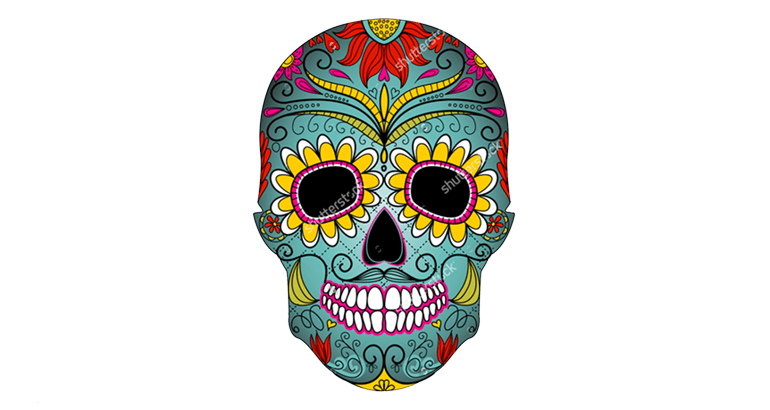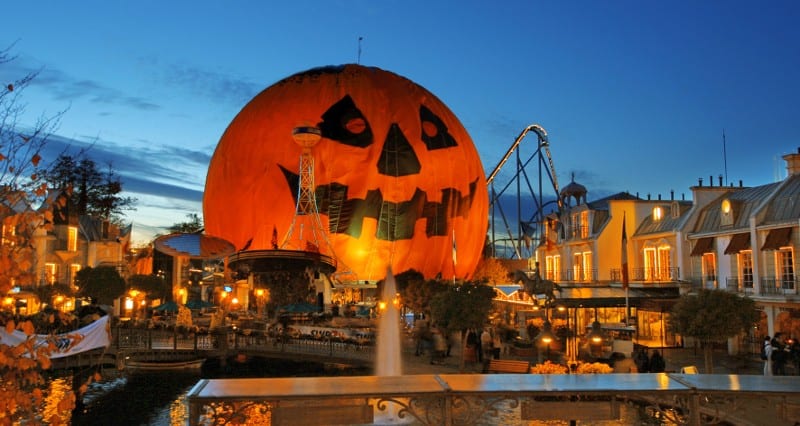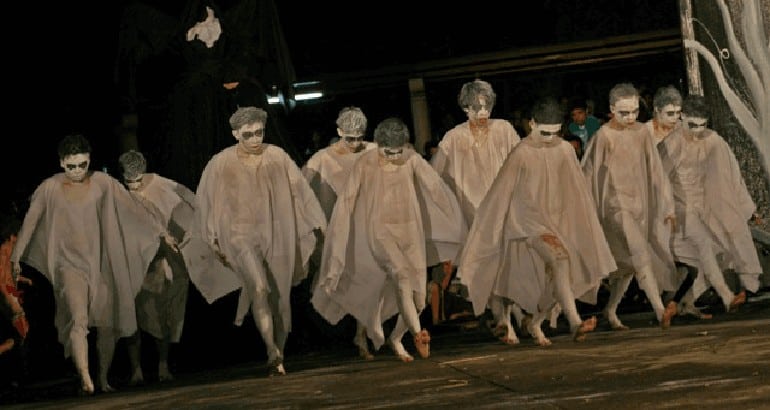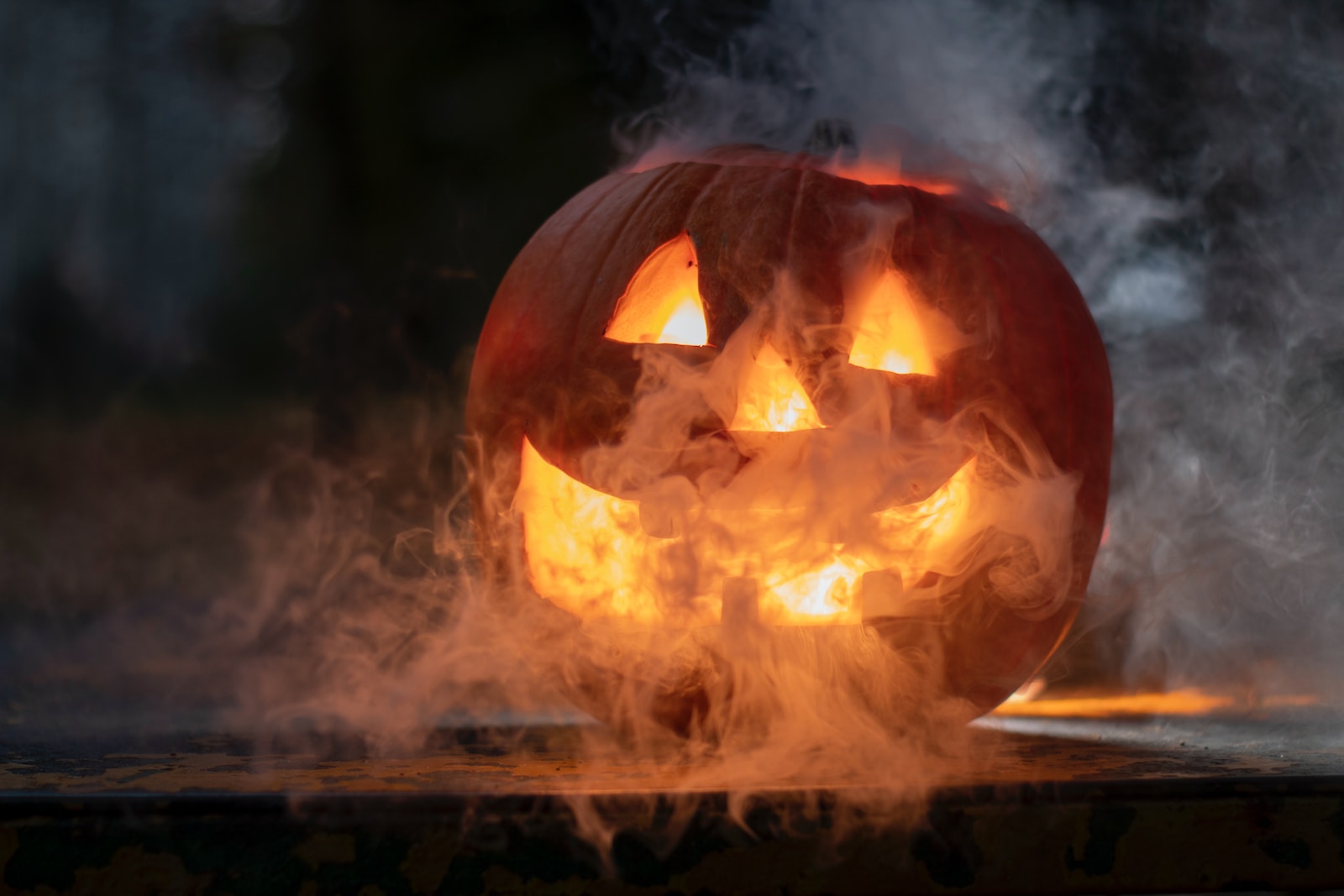With October coming to an end, adults and kids of all ages are gearing up for the annual fright-fest that is Halloween. This spooky event is marked not only in the UK, but by people across the globe, although the traditions and celebrations can differ a little from country to country.
Here are a few examples.
Mexico
In Mexico and some other Latin American countries, the evening of October 31st marks the start of Día de los Muertos, or ‘Day of the Dead’ – a chance for people to honour their deceased loved ones and ancestors with a range of interesting rituals.

Like the Halloween happenings you’re probably used to, this three-day event has a particularly ghoulish theme, with skeletons and sugar skulls the most common celebratory symbols.
Although the celebrations peak on November 1st, traditional beliefs state that spirits of the dead return to their families the previous day – All Saints’ Eve, or Halloween as we know it – before departing once again on November 2nd. During this time, it’s normal for families to visit cemeteries to be closer with their loved ones, and to offer food, drinks and gifts.
The United States
In no place is Halloween marked with more gusto than the United States. The country first became acquainted with what is now one of its favourite holidays back in the 1800s, when almost two million people crossed the Atlantic from Ireland, where it had been more widely celebrated.
It wasn’t until the early 20th century that the American commercialisation of Halloween began, however. Nowadays, come October 31st, the streets of towns and cities across the country are filled with young, costumed trick-or-treaters looking for sweets. The US’ enthusiasm for this holiday has spread to many other parts of the world, including Asia and Eastern Europe.
Russia
Celebrating Halloween is a relatively new tradition in Russia – it didn’t arrive until the 1990s, when nightclubs and entertainment venues in major cities like Moscow and St Petersburg began holding themed costume parties. Because of this, the event is more widely recognised and marked by younger Russians, with older generations often dismissing its importance.
In fact, the government is a little reluctant to celebrate Halloween too – quite the opposite, actually. Celebrations of the holiday are banned in some parts of the country, with authorities claiming it’s dangerous for children.
Germany
As in Russia, Halloween didn’t really arrive in Germany until the early 1990s, with party organisers and club promoters once again being the earliest adopters, having been inspired by the US. Unlike its Kremlin cousins, the German government remains open to celebrating all things spooky, with Halloween now the third-most popular commercial tradition, after Christmas and Easter.

Pumpkins and costumes are increasing in popularity across Germany, as is trick or treating – or ‘Süßes sonst gibt’s Saures’ – especially in the larger cities. Those looking for a particularly frightful way to mark Halloween, however, can visit Burg Frankenstein – a set of 1,000-year-old ruins near Frankfurt.
The Philippines
The schedule here is similar to that in Mexico, with Halloween acting very much as the preparation stage of a larger celebration over the first two days of November. This is when Filipinos like to remember their departed loved ones by lighting candles, laying flowers and praying.
It’s normal for cemeteries to be cleaned and prepared towards the end of October, and by November 1st, people start arriving to deliver food and presents. While it may all sound so serious compared with western traditions, most Filipinos see Halloween and All Saints Day as a chance to reunite with their families and have fun. Many tell ghost stories, for example, and some dress in costume.

Trick or treating isn’t quite the same in this part of the world, but there is something similar. ‘Pangangaluluwa’ – or haunting – sees many young people dress in white before going from house to house in search of food and money.
This year at Brightlines, we will be carving a heart in our pumpkins as a symbol of hope for children living in fear and to raise awareness of World Vision’s #carveaheart campaign, which is raising money for the children of war-torn Syria.
Happy Halloween!







